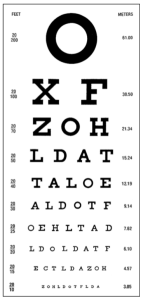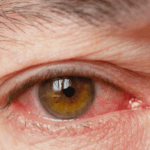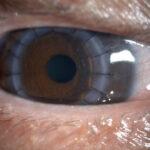People claim to have perfect eyesight if they have 20/20 vision or 6/6 vision. What does it actually mean?
The sole difference is the unit of measurement in feet and metres, respectively. When at 6 metres, and being able to see what a regular individual can see at 6 metres, the person would have 6/6 vision. Whereas, 20/20 vision depicts the same function, albeit at 20 feet instead of 6 metres. In Asia, these measurements are used interchangeably.
The visual system functions in a way that it processes visual information for us to be able to see features and images at far distances. We inherit the integrity that builds our visual system from our parents and the way it develops during early childhood. Within a populace of individuals with healthy eyes, the prime vision achieved would vary from slightly better than most (6/4 or 6/5) to slightly poorer (6.7.5). An example of these in our daily lives is: an individual is legally allowed to drive in Malaysia if they can attain a vision measurement of 6/12 in their better-seeing eye with corrective spectacles.

What assessments can test for 6/6 or 20/20 vision?
The examiner will start the vision testing by asking you to read letters from the chart (commonly known as a Snellen chart). The test will be conducted one eye at a time, and then with both eyes. The examiner can then measure your vision.
These results will provide important information regarding your vision and the prescription necessary to correct it.
Why is having good vision so important?
- Safety: By having a poor vision, activities such driving, biking, cycling and even walking can be dangerous for you and others. In Malaysia, the minimum vision requirement is 6/12 (20/40) vision or better to be considered safe to drive on a public road.
- Comfort: A clear vision allows you to have more freedom in your daily activities. Having good vision means that you won’t have to squint, whether you’re sitting at the back of the classroom or at the back row of the film theatre. You don’t have to strain your eyes to see things if you have good vision.
- Reading ease: Having good vision enables you to read comfortably and learn better.
- Quality of life: A good vision will provide you a better quality of life.
What causes you to have poorer than 6/6 or 20/20 vision?
Basically, there are various possibilities that can cause vision to be worse than the optimum 6/6 or 20/20 vision. The most common ones are refractive errors such as:
- Far-sightedness (hyperopia)
- Near-sightedness (myopia)
- Presbyopia: A condition that makes it more difficult to focus on a close-up object as you get older, due to aging
- Astigmatism: A condition caused by irregularity of the front part of the eye (cornea)
However, there are also many different eye disorders or diseases that can affect your eyesight, especially for those who have systemic diseases such as diabetes and hypertension.
How can your vision be improved if it is not 6/6 or 20/20?
There are several ways to help your eyes see clearly after you get your vision tested by an eye practitioner. The eye care professional can provide advice on the treatment options that fit and work the best for you, which may include:
- Glasses: Glasses or spectacles are the most conventional way of vision correction. It is very practical, affordable and safe. They work by refracting the light to focus on the retina, which helps you to see clearly.
- Contact lenses: Contact lenses work the same way as glasses to provide you with clear vision. However, it is more convenient and suitable for physical activities, especially for those who have an active lifestyle. Some people also prefer contact lenses for cosmetic purposes. Also, in certain refractive error conditions, contact lens correction can give better vision. For example, for those who have a large difference in refractive error or “power” between both eyes.
- Refractive surgery: Refractive surgery is performed by changing the refractive, or light-bending, properties of the eye. It is functional because it allows you to see clearly without depending on glasses or contact lenses. However, some may not be good candidates for refractive surgery due to various reasons. Examples of refractive surgery include Implantable Collamer Lens (ICL), laser treatment such as TransPRK, and cataract surgery.
What will happen to your vision as you get older?
As you get older, your vision may be affected, despite having 6/6 or 20/20 vision at distance throughout your younger years. Those in their 40s will begin to have some difficulty focusing on close objects or small print, and some might have difficulty telling colours apart. Two common eye conditions caused by aging are presbyopia or cataract.
When should you visit an eye practitioner or eye doctor?
You should visit an eye practitioner or eye doctor when you have a condition such as:
- Eye pain
- Blurry vision
- Headaches due to eye strain
- Eye redness
- Eye swelling






